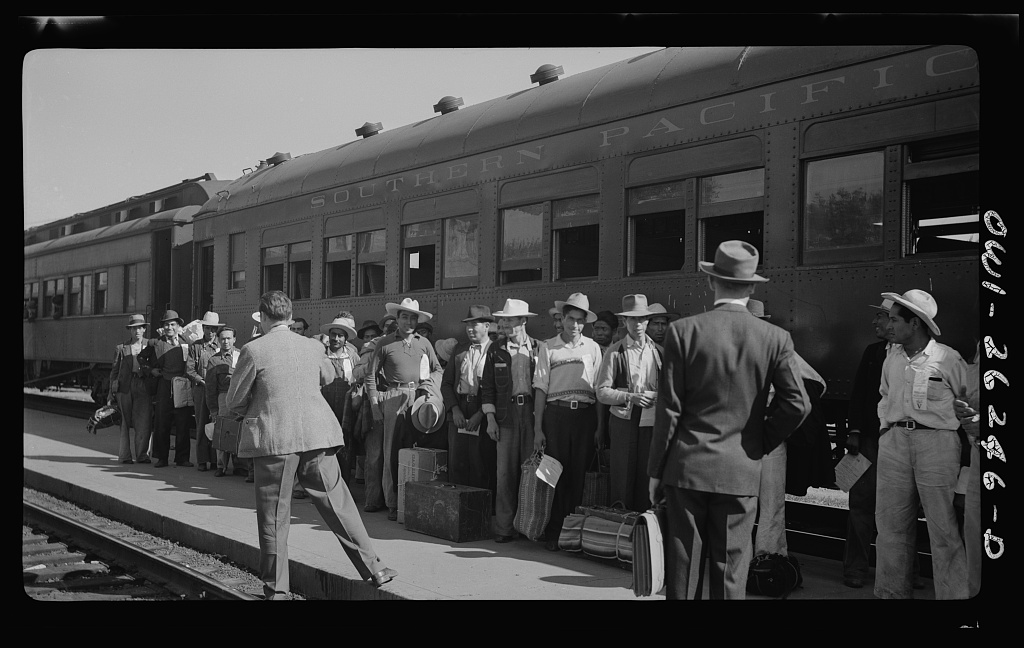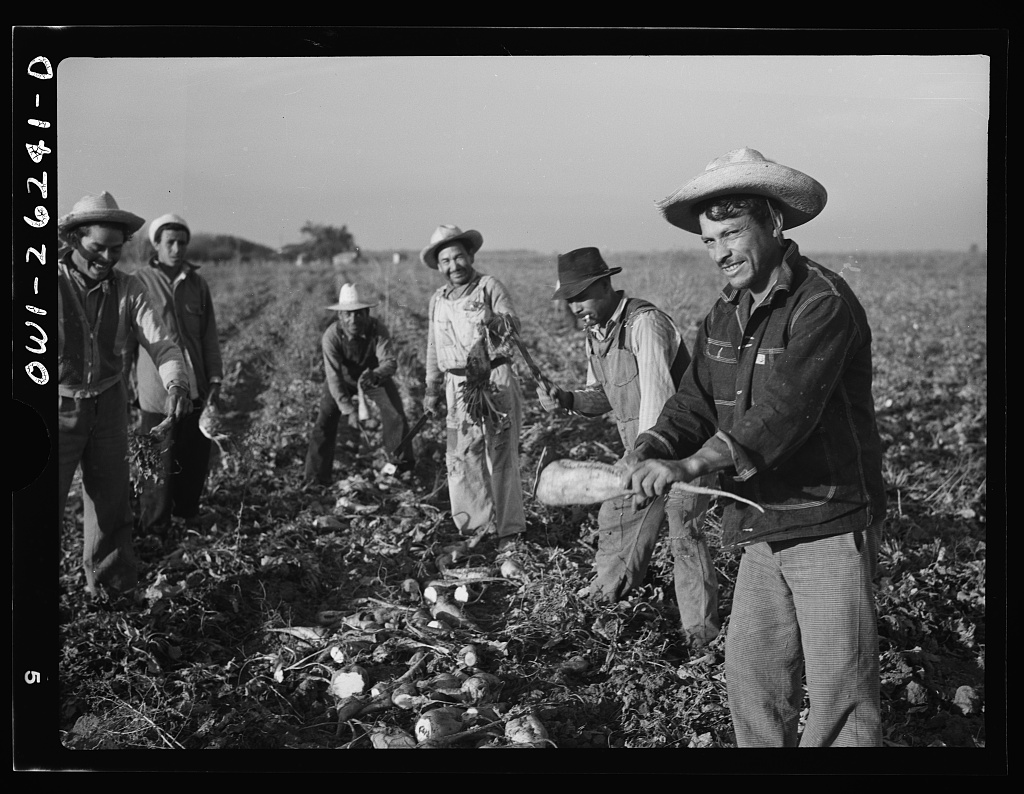
For decades, economists have studied the impact of immigration on domestic labor markets. As a shortage of domestic farm labor has led to increased participation in the H-2A visa program, a brief look back at past immigration policies helps frame why migrants from Central and South America have largely been associated with filling necessary agricultural jobs in the U.S.
Past immigration policies enacted to support U.S. agriculture
Federal oversight of immigration began in the U.S. in 1891 when Congress established the Office of Immigration, according to the U.S. Citizen and Immigration Services website.
In an effort to decrease immigration from Europe, a bipartisan special committee called the U.S. Immigration Commission (known as the Dillingham Commission after its chairman) was formed to identify issues pertaining to high immigration rates to the U.S. from Eastern and Southern Europe and provide solutions for capping those rates. Published in 1911, the commission’s 41-volume report only briefly touched on immigration from Mexico and identified Mexican immigrants as the best solution to the labor shortage in the Southwest leading up to World War I and proposed exempting Mexicans from immigration restrictions. New European immigration was seen as the greater threat to the American workforce at the time, and due to the geographic proximity of Mexico and the ability of Mexican laborers to easily return home after a short term, the reports largely dismissed fear of immigration from Central and South America, citing the kinds of jobs those migrant workers occupied as both underpaid and highly labor-intensive.
A few decades later, in 1942, one of the first agricultural immigration policies in the U.S. was passed by executive order. That order established the Mexican Farm Labor Program and, subsequently, the Bracero Agreement was made. The agreement provided short-term contracts to millions of Mexican men to legally work in the U.S. agriculture and railroad construction industries. Spanish for “arms,” braceros was the moniker given to the men in the program who filled jobs on farms in place of the millions of U.S. soldiers who were deployed to fight in World War II. By 1964, when the program was terminated, an estimated 4 million Mexican laborers had helped support the U.S. through war and various economic crises.
It was during that same period that the Immigration and Nationality Act (INA) of 1952 authorized the H-2 nonimmigrant visa category — the precursor to the H-2A program — which officially permitted the recruitment of foreign farmworkers to the U.S. on a temporary basis.
However, even as the Bracero and H-2 programs continued to recruit temporary workers from Mexico, federal immigration authorities led roundups of undocumented Mexican nationals for deportation, ultimately claiming to have deported 1 million Mexicans between 1953 and 1954.
Concerns over immigration grows, policies become more restrictive

Fast forward four decades, when the Illegal Immigration Reform and Immigrant Responsibility Act added Section 287(g) to the Immigration and Nationality Act in 1996. Often referred to simply as 287(g)s, the provision authorized U.S. Immigration and Customs Enforcement to partner with state and local law enforcement agencies to perform immigration officer functions under the agency’s direction and oversight, explained Genti Kostandini, a professor of agricultural and applied economics at the University of Georgia College of Agricultural and Environmental Sciences (CAES).
“Basically, someone could get pulled over for having a taillight out and, if they were undocumented, they’d be booked and queued up for deportation,” Kostandini said.
After the attacks on Sept. 11, 2001, immigration policies were swiftly updated to enact even stricter enforcement of undocumented immigrants, whether or not they had committed a crime.
“People were really on edge,” recalled CAES Professor Cesar Escalante. “There was a growing public sentiment that additional policies were needed to prioritize domestic workers over immigrants, and it made sense to a lot of people at that time.”
Following the economic downturn in 2008, that nationalistic sentiment pentrated domestic politics. In 2009, then-President George W. Bush signed an executive order requiring all federal contractors and subcontractors to use a previously voluntary program, called E-verify, which required employers to confirm that all employees were legally registered to work in the U.S. The combination of 287(g)s and use of E-Verify established a structure in the labor market intended to provide more economic opportunity and growth for communities, particularly for U.S. citizens.
The impact of immigration enforcement on agriculture
While these policies were intended to root out undocumented immigrants, they often produced complications for documented immigrants as well. The fear of being deported was a strong driver for immigrants to move to jurisdictions that did not enforce such strong immigration policies, Kostandini explained.

In a collaborative study of the impact 287(g) policies have on agriculture in the U.S., Kostandini and Escalante found a marked reduction in immigrant presence in jurisdictions where these policies were adopted. However, there was also a noticeable reduction in overall farm profitability. Kostandini found that the use of E-Verify produced comparable results in a similar study.
“We found that whether you look at 287(g)s or E-Verify, at least for agriculture, these programs didn’t do anything in terms of wages, increased employment or career advancement opportunities for U.S. citizens, for whose benefit they were created,” said Kostandini. “If you were in the states or counties where these policies were adopted, compared to citizens who were in states or counties that did not adopt these policies, there was no difference in benefits for citizens.”
Farms that were in either 287(g) or E-verify jurisdictions realized lower overall profits, Kostandini explained. The research also followed the trends of undocumented versus documented immigrants. In counties with these policies, there were fewer undocumented immigrants; however, instead of seeing increased job placement of U.S. citizens in agricultural jobs, it was documented immigrants who benefited from the policies, further demonstrating that citizen workers are not pursuing the types of jobs undocumented workers do in the agricultural sector.
“Another interesting thing that emerged from this work,” said Kostandini, “is that the farming sector of the adopting jurisdictions had lower profits after immigration laws were passed. Farmers tried to adopt technology to mechanize field operations as a substitute for manual labor in labor-intensive crop production, but there were simply no available technologies to substitute for all the loss of labor, especially for fruit and vegetable harvesting, to make them as profitable as before.”
In 2011, a comprehensive statewide survey conducted by the UGA Center for Agribusiness and Economic Development revealed that millions of dollars in crop losses and tens of thousands of farming jobs were being left unfilled in the wake of these restrictive policies.
In September 2019, Kostandini spoke at the Georgia Senate Agricultural Labor Study Committee hearing on immigration policy and labor supply in agriculture. Asked for a solution, Kostandini told lawmakers not to continue enforcing policies that research demonstrates are ineffective. “There are many rigorous studies, they have gone through strict peer reviews and due diligence several times, this is not anecdotal,” he stressed.
At that same time, Escalante was working as a faculty member with UGA Cooperative Extension and was interested in hearing from farmers throughout the state about their ability to maintain their farm operations.
Small- to mid-scale farms continue to be labor-intensive, struggle to find domestic labor
“The overwhelming feedback I received was they could not find domestic farm labor,” he said.
Escalante said years of research have shown that farm owners and managers struggle to fill fieldwork positions with domestic workers, who seek jobs that provide better pay, overtime, insurance and fringe benefits, as well as less risk of physical injury and exposure to environmental risks.
According to the U.S. Department of Agriculture, the Food and Agriculture sector contributed $1.264 trillion to U.S. gross domestic product in 2021. In 2020, an estimated 70% of farmworkers in the country were from Central America, according to the U.S. Department of Labor.
When looking at the big picture, Escalante said the farms most impacted by restrictive immigration policies are smaller farms, as larger farm operations are better suited to mechanize in the absence of manual labor due to their relatively larger financial capability. Smaller farms continue to be labor-intensive and these producers often must use other strategies, such as asking family members to step in to help on the farm.
“But these solutions are not enough,” said Escalante. “It all boils down to the fact that the farm sector still largely depends on foreign labor. And that’s when I turned my attention to the H-2A program.”
Editor’s note: This is part two of a three-part series exploring how U.S. immigration policy impacts agricultural production in Georgia. Read part one at newswire.caes.uga.edu. In the final installment, we’ll share the current status of the H-2A visa program and how CAES researchers hope to help growers and the workers they employ find balance in the shifting field of agriculture.




